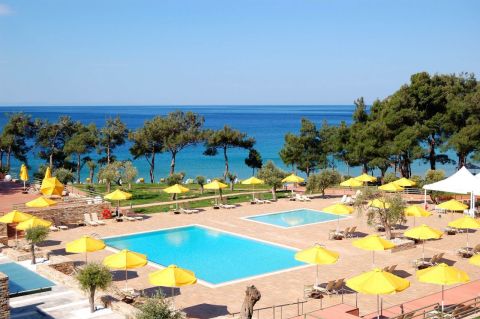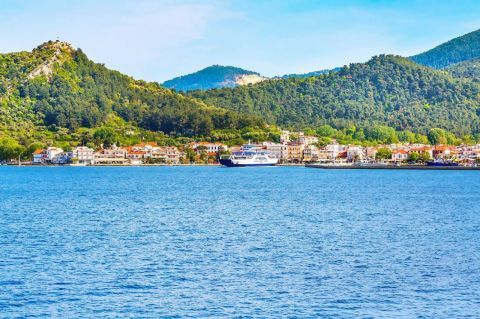Introduction & General Information



Thassos (or Thasos) is situated in the north Aegean Sea. It is the northernmost island in the Aegean region and is just off the coastline of the Greek mainland. This island is part of the Kavala prefecture. Thassos is situated about 10 km away from the southeast of the Macedonian seaport of Kavala.
Thassos island was first inhabited by the Phoenicians. During the Balkan Wars, in 1914, Thassos Island came under Greek control. Before that, Thassos had a turbulent history of wars and battles between different regimes including the Athenians, the Persians, the Lacedaemonians, the Romans, the Latins, and the Turks. They all tried to control Thassos.
While in Limenas, which is also referred to as Thassos Town, one can have a glimpse of the numerous ruins on which the modern city was built, which speaks for itself about the rich history of this region.
The island of Thassos has been inhabited since the 7th century B.C. and had a vibrant economy during ancient times due to the abundant supply of precious natural resources. There were gold mines and ore mines. Timber and marble were exported to Egypt, Italy, and Asia Minor, which resulted in a great foreign exchange influx.
Ruins from ancient Thassos in Limenas including the Agora, a civic and commercial center, the Acropolis, a temple devoted to Apollo and the Hellenistic theatre speak volumes about the past. Recent excavated findings include a 6th century B.C. Kouros, which is actually a nude male statue, and a marble bust of Dionysos from the 3rd century B.C.
Thassos is famed for its wine with its distinctive apple aroma and its marble quarries. The inhabitants occupy themselves with cultivating land, as well. Honey and olive oil are the chief agricultural products. The locals also undertake herding and fishing. Other industries include mining zinc, lead, marble, and lumbering.
Tourism is, of course, a mainstay livelihood for the people in this area. The island of Thassos also houses a gymnasium, a lyceum, a few schools, and two harbors, the old harbor and the new harbor which is in use.
While on Thassos, one can have pretty easy accessibility to its splendid beaches and mountainous villages dotted with pine forests. This has been made possible due to an arterial road encircling the island.
The island of Thassos has still remained somewhat unaffected by mass tourism and rapid commercialization. The magnificent mountainous landscape with its verdant landscape and excellent beaches does draw a cosmopolitan group of summer tourists from many European countries. Local Greek population also forms a part of the tourist influx.
The weather in Thassos is spared by the Meltemi winds during July and August. At the peak of the holiday season, the temperature in Thassos remains rather scorching with a lot of humidity. Thassos is home to some extraordinary beaches, the finest being situated to the east and south.
Beaches in Thassos like Alyki and Paradise are just out of this world. For off the beaten track excursion enthusiasts, Thassos also provides some wonderful coves and bays.
Thassos does not feature on the major ferry routes but has a regular ferry service from the Greek mainland. There are quite a few ferry services to and from Kavala and Skala Prinos, which is the west coast port of the island. There are numerous hydrofoils connecting Kavala and Limenas, the capital on the east coast of Thassos. The journey takes about 45 minutes.
The interior of Thassos is a paradise for hikers due to its mountainous trails through forests and some breathtakingly beautiful natural countryside. The topmost point in Thassos is situated at 1,045 meters above sea level and is called Mount Ypsarion. The flora of this region has countless varieties, a boon for the migratory beekeepers. The local stores keep honey products of innumerable forms, such as honey and walnut liqueur, courgettes and prunes in honey.
Hiring a car or a moped to get around the island of Thassos is a nice proposition due to the arterial road around the coastline with intermittent branching off via certain dirt roads leading to pretty settlements in the mountains.
Except for summer, another good period to visit Thassos is also during Carnival, in late winter or early spring. The Carnival of Thassos is one of the most famous in Northern Greece for the revival of old costumes.



